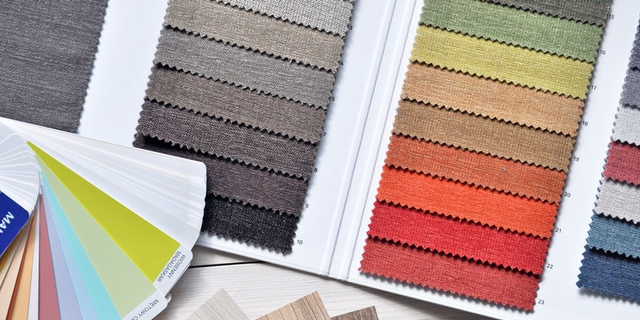A pleasant environment is something important to most people when it comes to the interior spaces of their home, and that is where color can play a huge role in the transformation of your rooms. To create the perception of space without changing an inch of wall, paint is one of the most effective elements to use. Design pros are sharing their favorite tips on gorgeous color palettes to consider for your next home interior project.
The Color Wheel
If you feel overwhelmed by what shades to choose for defining your interior spaces, then, begin by picking up a pocket color wheel from your local hobby or arts and crafts store. Even design experts use the wheel because it provides helpful information such as color relationship harmony, complementary colors, tone variation, and more.
1. Complementary
Here is a color palette that adds amazing interest to a room. Complementary hues grab your attention because they sit at opposite ends of the wheel. Look at the shades of orange and blue, for example.
A complementary palette in professional acrylic paint turns heads because it can transform a space with a vibrant and high-energy color scheme. You could paint your walls blue and add furniture accent pieces with orange or both shades appearing in a rug or couch pattern. Design pros recommend that one color should be subtle, and the other color should be more dominant.
More complementary color pairings include yellow and purple or red and green.
2. Monochromatic
Different tones, values, and saturation of a single color make up a monochromatic color palette. This is a popular selection for a lot of interior home design projects and can allow your room or rooms to exude a soft and elegant appearance.
The shade of gray is a fab neutral in a monochromatic palette that is excellent for giving an airy quality to a space. Using different textures in couches, rugs, pillows, etc. all based on the gray hue will break up a flat look, which can sometimes occur with monochromatic shades.
3. Analogous
Now, take out your pocket color guide, and study the hues that appear next to each other on the wheel. These are known as analogous shades and can also play nicely when choosing your look for your home’s interior. You can go with two or three of the hues in a row from the wheel.
Blues and greens, for instance, are probably the most frequently used analogous pairings in interiors, say some leading design pros. Their advice is this:
Go by the 60:30:10 rule. Fill 60% of your space with your dominant color, 30% of your space with one of your supporting colors, and 10% of the space with your other supporting color.
4. Illusion
You can also play around with color palette ideas that involve color illusion and perform in a subtle and sophisticated manner for your interior spaces to make big rooms look smaller and tiny rooms appear much larger.
Some tips include using dark neutrals or warm colors on your walls and floors to visually scale down a grande-sized room. Also, you could try visually lowering a ceiling by painting it darker than the walls.
On the other hand, to make a ceiling appear higher, paint it a hue that is lighter than the walls. In addition, you can give the illusion of growing a large room by using light colors on the walls, floors, and ceilings.
5. Accent
An accent color palette is yet another clever technique for adding beauty and interest to your home’s interior spaces. In this case, you would select accent colors to pull a room together, and these hues can be either bold or subtle.
For instance, just incorporating the color white into a room will make patterns and colors appear lighter. If you add a dark shade to the room, such as black, the darkness of the patterns will come out.
Playing around with the color wheel is an excellent place to begin your next home interior project. You will have fun looking at the many variations available and will be able to add a nice cohesion throughout your home.
Read more: How To Start A Painting Business? Everything You Need To Know About Painting Business





